Ontario.ca IA and search


Government
Ontario Digital Service
Lucia Hsieh, Sharon Lam (UX), Antoinette Di Michele (content)
I was responsible for the entire system development process from user research such as interviews, card sorts, and tree tests, to mapping out content structures and prototyping navigational components.
Ongoing
Cover photo by Luisa Brimble on Unsplash
Our team is dedicated to improve how users find what they need faster and easier online. We analyze how users would:
How we write and structure content such as:
How we categorize, create relationships and present content such as:
How we browse for information such as:
How we find information such as:
Components that feed into other systems such as:
As a user of ontario.ca, I need to:
So that I can:
As our fairy tales suggest, getting lost is a bad thing. It is associated with confusion, frustration, anger and fear.
— Louis Rosenfeld, Peter Morville and Jorge Arango. Information Architecture for the Web and Beyond (4th edition).
We’ve conducted research sessions to learn how people of Ontario would categorize programs and services (such as renewing driver’s licence, applying for student loan, or registering a business).
We discovered that users:
The findings guide how we structure content on ontario.ca.
We conduct tree tests to evaluate how well users can find answers to relevant tasks.
We also explore UI (user interface) patterns that will reflect how the tree is structured.
A clear structure improves usability as it helps users discover relevant content that they may not have searched otherwise.
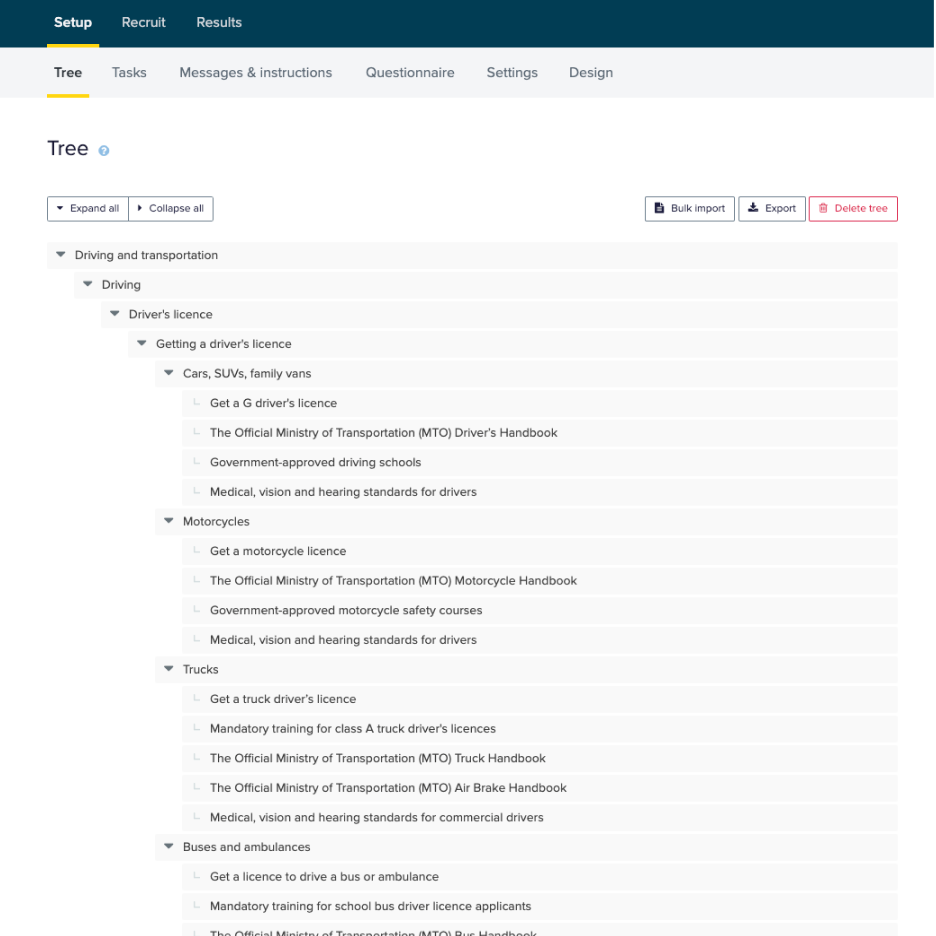
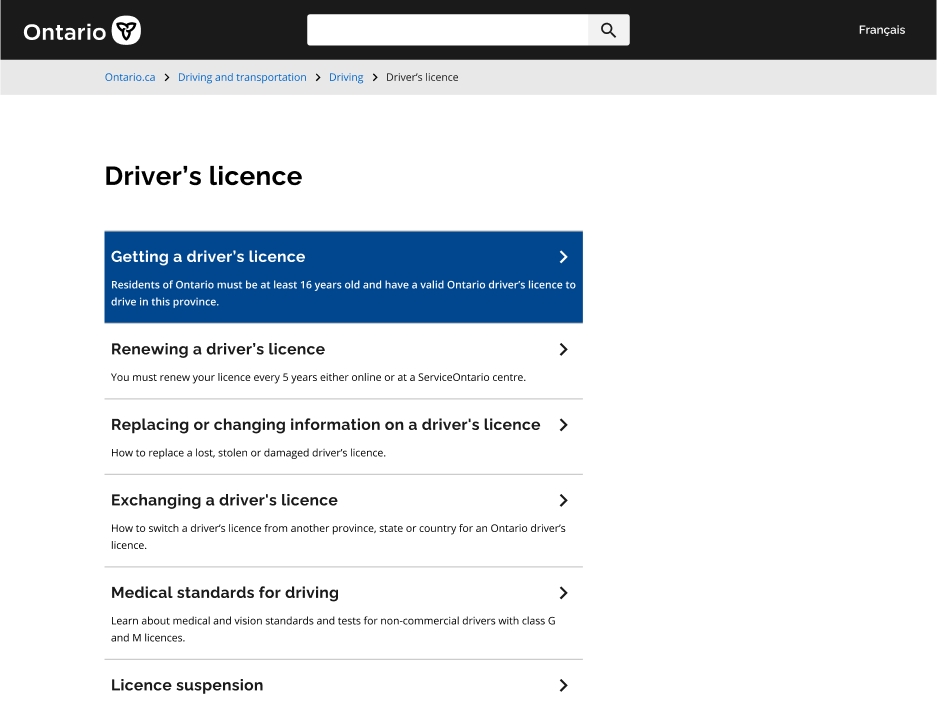
The structure of information environments influences more than how we find stuff: it also changes how we understand it.
— Louis Rosenfeld, Peter Morville and Jorge Arango. Information Architecture for the Web and Beyond (4th edition).
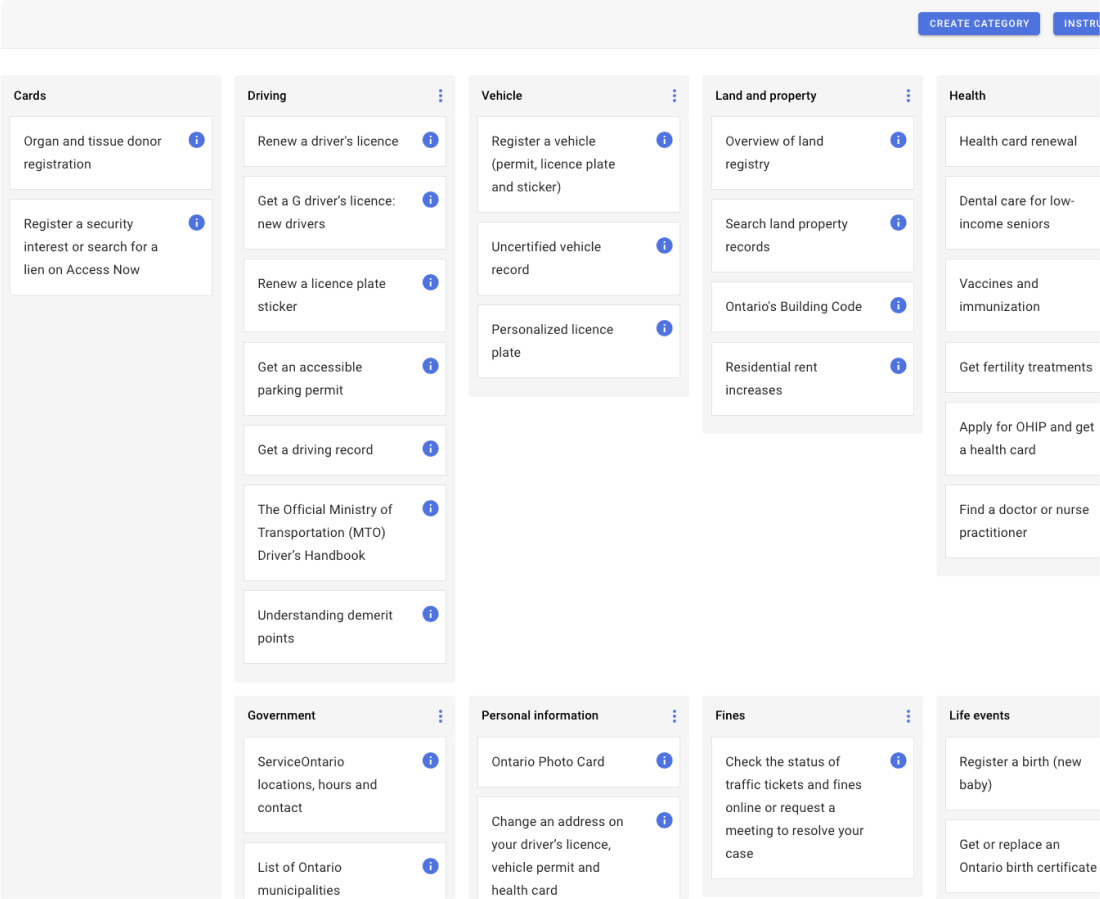
We conduct open card sorts to understand how users would group and label the content.
With clear labels and a logical structure, we can help users locate specific information.
We analyze top search queries and prototyped ways in which we can design the experience to complete tasks as fast as possible.
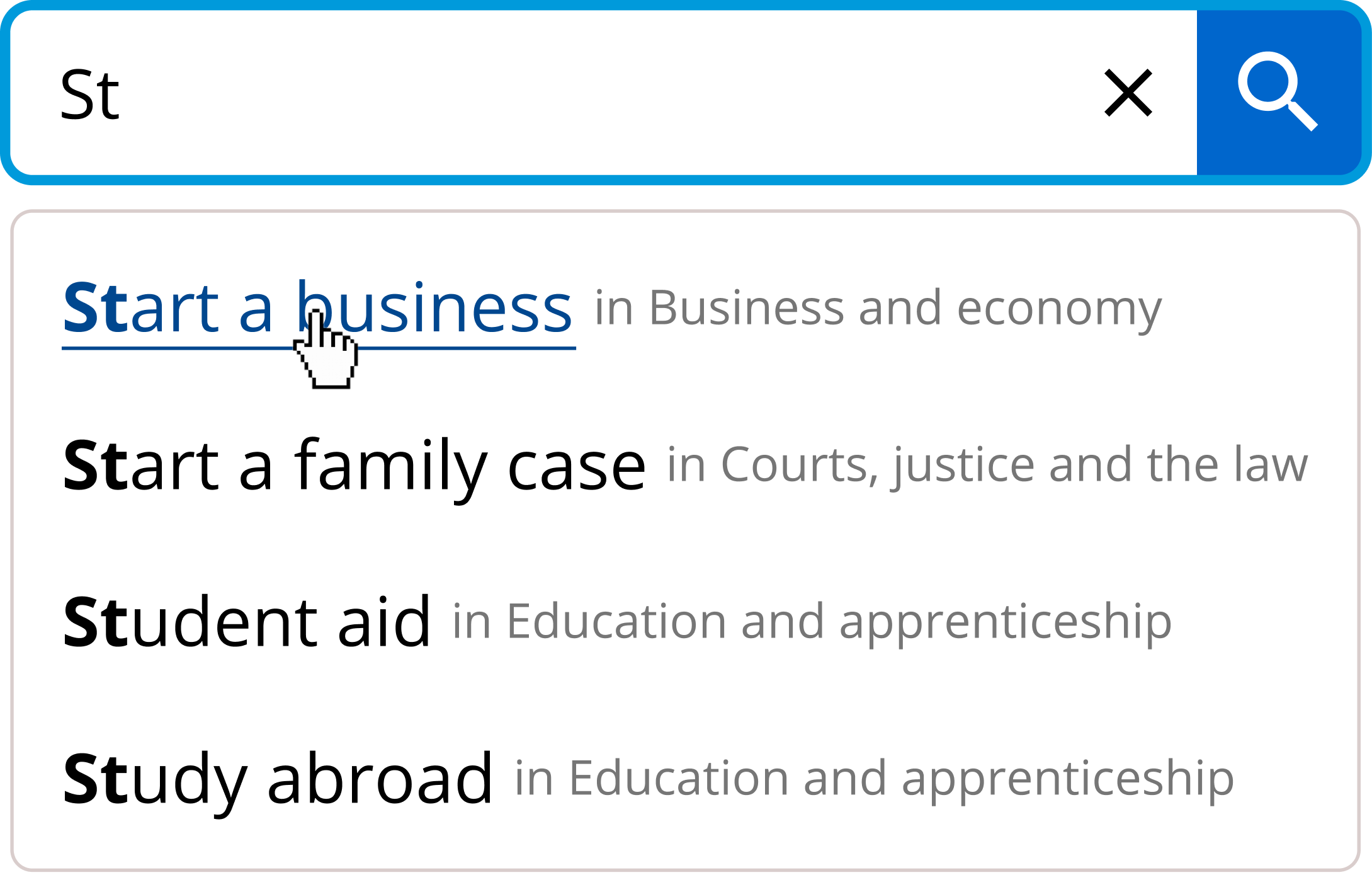
How government addresses a program or service can often be different from how users would refer to them. For example, vehicle permit is the same as green paper, green permit, or registration papers.
We interview ministries and gather user data to create a curated list of terms that help us understand:
Vocabularies and thesauri can enhance the search experience as users do not have to type the exact words to get to the results.
When structures are clearly mapped, this enables ministries to evaluate content better as it is easier to spot where everything is.
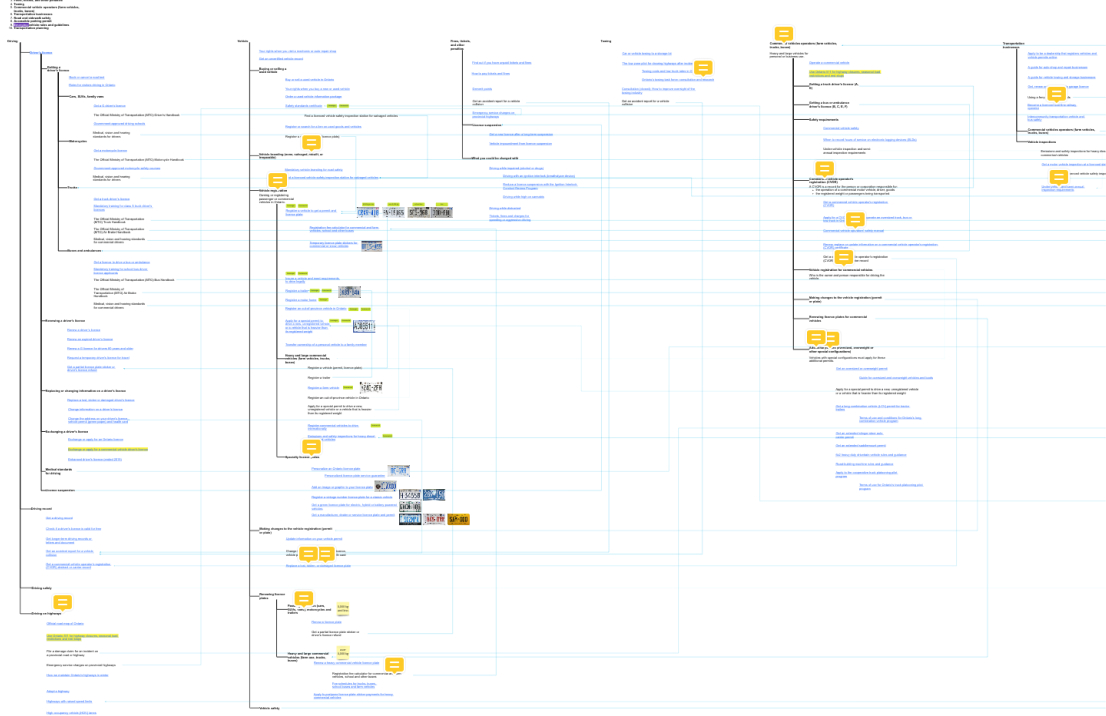
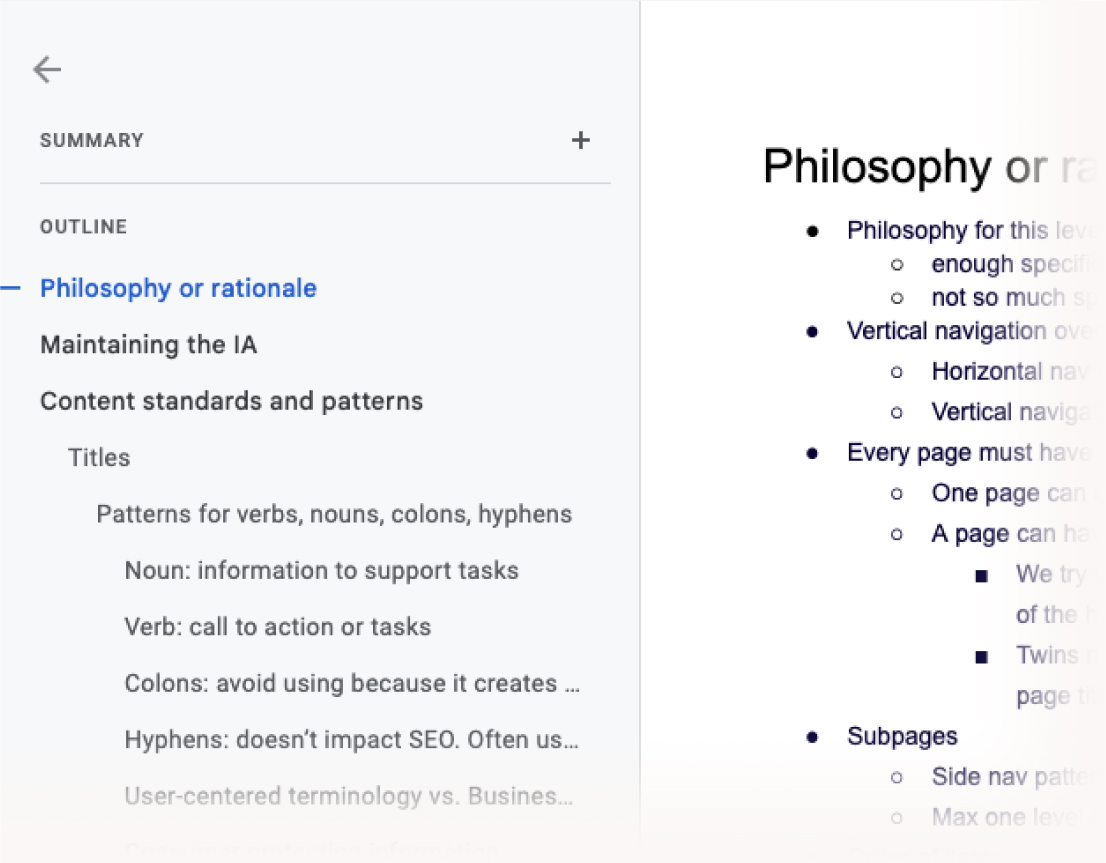
As we analyze information, we document standards and systems that can apply across ontario.ca so that it will be easier to add, modify, or archive content in the future.
With strong content standards and systems in place, we can have a leaner CMS (content management system).
This means we can spend more time building user-centred services and less on content that no longer serve user needs.